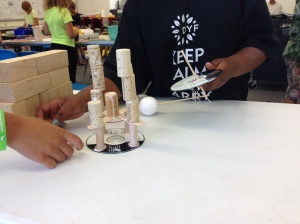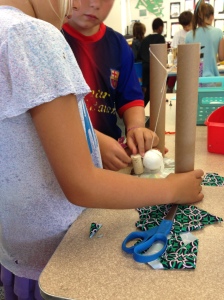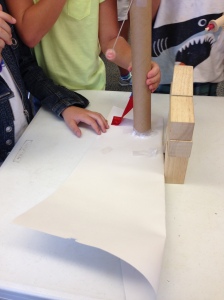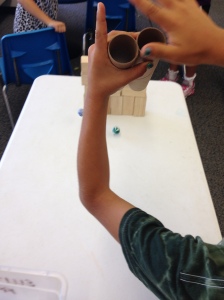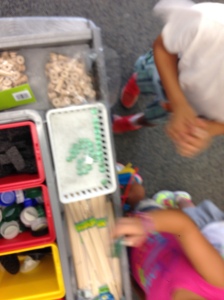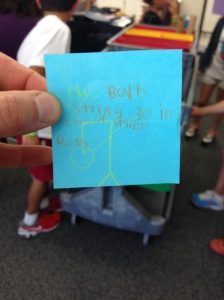5th Grade Promotion, 2017-18
Coleman Families, Alumni, Parents, Grandparents, Community Members, Tigers.
Welcome to the 2018 Coleman 5th grade promotion ceremony. Kids - you made it!
Parents - you made it! Coleman Teachers - you made it!
Welcome to the 2018 Coleman 5th grade promotion ceremony. Kids - you made it!
Parents - you made it! Coleman Teachers - you made it!
Many of you know that we host a Morning Message each Wednesday.
Just last week, we hosted arguable our best morning message of the year.
Jackson Johanson, the student council president, and I were almost giddy about how well all of the
students were doing and that it only took ALL year to get there. And it was in that moment that a
something became wonderfully clear to me. Just when you seem to have it all figured out, life goes and
changes everything.
Just last week, we hosted arguable our best morning message of the year.
Jackson Johanson, the student council president, and I were almost giddy about how well all of the
students were doing and that it only took ALL year to get there. And it was in that moment that a
something became wonderfully clear to me. Just when you seem to have it all figured out, life goes and
changes everything.
Just when Mrs. McEowen seems to have taught the most epic writing lesson, the next lesson is a new
genre that you have to figure out. Right after Mr. Jackson teaches you about multiplying fractions, he
throws in decimals! Right after Ms. Kenney asks you to write about Walker Creek, she then
says “now edit it!” Ugh!
genre that you have to figure out. Right after Mr. Jackson teaches you about multiplying fractions, he
throws in decimals! Right after Ms. Kenney asks you to write about Walker Creek, she then
says “now edit it!” Ugh!
Kids, don’t despair. Embrace these changes; for this is actually what life, and growing up, is all about.
This is how we learn. So, prepare for this. Notice, I didn’t say, “good luck for these changes”
or “I sure hope you’ll get middle school.”At these speeches, you will often hear “good luck”,
or “I hope you enjoy middle school.” Not today, because in the last two years, here is what you
have taught me. You have taught me that your hard work and perseverance will make your luck happen.
Your kindness to others will endear you, connect you to chance opportunities and people and ideas.
That is your luck - you make it yourself. You have made it yourself.
This is how we learn. So, prepare for this. Notice, I didn’t say, “good luck for these changes”
or “I sure hope you’ll get middle school.”At these speeches, you will often hear “good luck”,
or “I hope you enjoy middle school.” Not today, because in the last two years, here is what you
have taught me. You have taught me that your hard work and perseverance will make your luck happen.
Your kindness to others will endear you, connect you to chance opportunities and people and ideas.
That is your luck - you make it yourself. You have made it yourself.
If you hang around me long enough, you will hear me say that “hope is a bad strategy”. This is usually
tied to some budget or strategy thing. People often use the word hope, but I want you all to be ready
to moves past this word and actually design a future for yourselves so that you will politely say,
“Thank you” as someone says to you, “I hope you do well on your test”. You will smile and say
“thank you” (because you are kind), as you pass your test because you had a plan and worked hard.
You had an idea of what to do, and you did something. No luck or hope needed, you work hard.
tied to some budget or strategy thing. People often use the word hope, but I want you all to be ready
to moves past this word and actually design a future for yourselves so that you will politely say,
“Thank you” as someone says to you, “I hope you do well on your test”. You will smile and say
“thank you” (because you are kind), as you pass your test because you had a plan and worked hard.
You had an idea of what to do, and you did something. No luck or hope needed, you work hard.
So, class of 2026. Class that I have come to know and love in the last two years, class that I will be
watching as you move through middle school and into high school. I wish you no luck - Go and be great;
no hope you do well - Get it done, you’ve got this.
watching as you move through middle school and into high school. I wish you no luck - Go and be great;
no hope you do well - Get it done, you’ve got this.
We all love you very much and always, always have your back.
Ladies and Gentlemen, the class of 2025.



